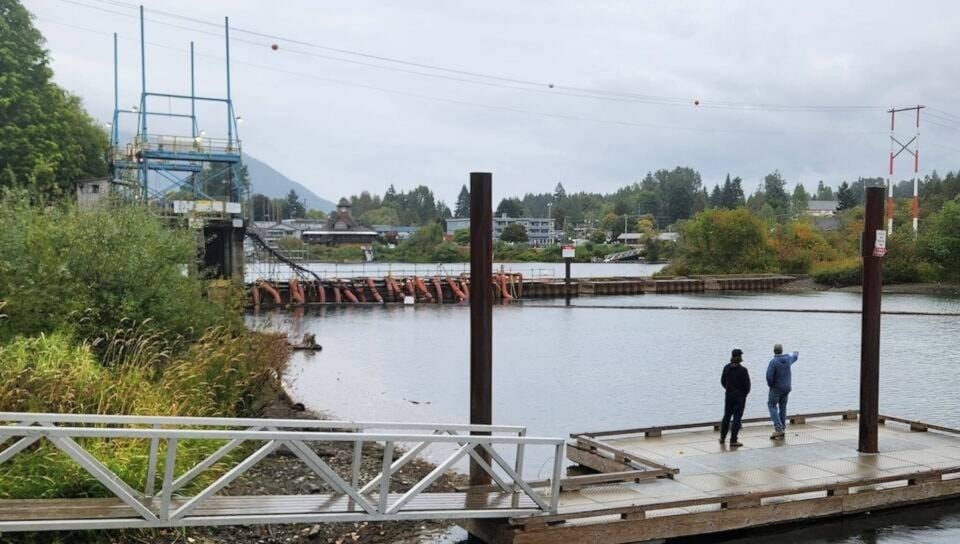Officials are sounding the alarm over water levels in Cowichan Lake that are on course to equal previous years of severe drought.
Brian Houle, environment manager at the Crofton mill which owns and operates the weir at Lake Cowichan, said that as of July 7, Cowichan Lake is just 48 per cent full and now that the summer’s hot and dry weather has arrived, water levels are expected to continue to drop.
He said this summer season is now becoming as challenging as 2023 when a severe drought lowered water levels in Cowichan Lake and the Cowichan River dramatically, which resulted in the deaths of approximately 84,000 fish in the river.
Domtar, which owns the Crofton mill, had to use 20 pumps for more than a month in September and October of that year to pump water over the weir to sustain water levels in the river.
“Professional projections show that if the flow [of water into the river over the weir] is not reduced to below 7.06 cms very soon, there will be significant challenges in the fall due to the low water levels in the lake and an increased likelihood of pumps being used," Houle said on July 7.
“In the worst case scenario, by holding the water flow at 7.06 cms, the river will be on its last day of seven cms on about Aug. 16-21, resulting in pumping beginning on about Aug. 28-31. If fall rainfall is late to arrive, professional projections indicate as many as 89 days of needing to pump the lake water into the river could be needed, and the licence for pumping is a maximum of 49 days. Action is needed and as soon as possible.”
The drought in 2023 led to a new approach to managing the water inventory in Cowichan Lake, and both provincial and federal fisheries are now aligned on what actions are needed to manage water flows.
Houle said authorization had not initially been given to reduce water flows from the lake into the river due to fears of the impacts that would have on the fish in the river, but a meeting on July 7, that was attended by Domtar, provincial and federal representatives and members of Cowichan Tribes, resulted in a consensus agreement to reduce the water flow to 5.5 cms over a three-day period, and the Department of Fisheries and Oceans Canada gave that authorization on July 10, with the water-flow reduction beginning that day.
Houle said on July 10 that a follow-up meeting is scheduled during which the discussion will focus on gaining authorization for further flow reduction down to 4.5 cms, the needed base flow for this summer, to reduce the number of days of pumping that now expected to be needed later this year.
"It is always difficult to know what future weather will bring, but after so many years of dry summer weather, it is likely that pumps will be needed later in the dry season, and Domtar is now making arrangements for pumps to be available to be used later in the dry season," he said.
A recent notice from DFO said the annual closure of the fishery on Cowichan River, which usually runs from July 15 to Aug. 31, started on July 4 this year to protect fish populations during the warmer months.
The river will reopen for fishing on Sept.1.



